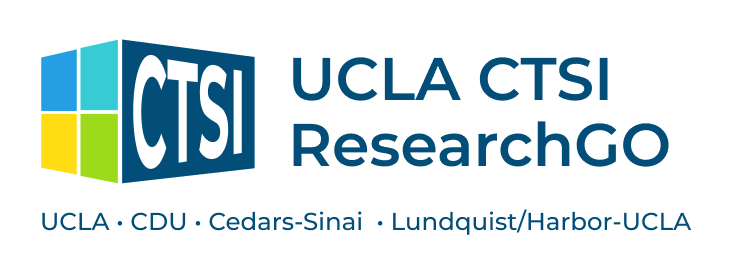- IRB Guidance for All Research Studies
- Formatting Guidelines for Consent Development
- Guidance, Tools and Templates
Consent Development
With few waivers and exceptions, researchers must obtain and document prospective consent from the research subject before initiating any screening or study procedures. Any exceptions must be reviewed and approved by the IRB beforehand. For additional guidance on the informed consent process, please refer to UCLA OHRPP Guidance and Procedure: Obtaining and Documenting Informed Consent.
UCLA Consent Form Templates
When developing a consent document, you should start with the appropriate UCLA Consent, Assent and Screening Informed Consent forms for your study. With rare exceptions, new consent forms should include all applicable standards language and follow the layout of the new consent form templates. These templates include required regulatory elements and UCLA-required language.
Choosing a Consent Form Template
Rather than dividing the templates into biomedical and behavioral templates, they are divided into the templates used for minimal risk studies, greater than minimal risk studies or for both. It is important to use the consent template that best fits the type of research you are conducting. For example, if you are conducting a study that involves the use of investigational or approved drugs, devices, diagnostics, therapeutics; or studies that may be considered interventional research, use the Biomedical greater than minimal risk consent form template.
If you are unsure which template to use, please contact the OHRPP Office.
IRB Guidance for All Research Studies
Documentation of informed consent: Federal and state regulations direct that informed consent be documented, in general, with a written consent form approved in advance by the IRB and incorporating the required elements of consent. The participant or his/her legally authorized representative reads, signs, and dates the consent form. The person obtaining consent also signs and dates the consent form. A signed copy of the consent form is given to the participant or, when appropriate, to his/her legally authorized representative.
Note: No changes may be made to the form without prior approval from the IRB.
The IRB may ask for the inclusion of additional elements of consent that are recommended by the Common Rule, including:
- A statement that the particular treatment or procedure may involve risks to the subject (or to the embryo or fetus, if the subject is or may become pregnant), which are currently unforeseeable
- Anticipated circumstances under which the subject's participation may be terminated by the investigator without regard to the subject's consent
- Any additional costs to the subject that may result from participation in the research
- The consequences of a subject's decision to withdraw from the research and procedures for orderly termination of participation by the subject
- A statement that significant new findings developed during the course of the research, which may relate to the subject's willingness to continue participation, will be provided to the subject
- The approximate number of subjects involved in the study
Please contact the IRB for questions or study-related issues.
Formatting Guidelines for Consent Development
Refer to the UCLA Biomedical Consent form Standards and Sample Language, for guidance on the following:
- General Instructions about how to prepare and format the consent form.
- Section by Section Instructions about how to complete each section of the UCLA Consent Form for Greater Than Minimal Risk Studies (Biomedical Focus) template. Keep this document readily available as you prepare the consent form.
- Suggested Language for each section of the consent form template.
-
UCLA Required Language for all UCLA consent forms.
Special Considerations for Research Involving Tissue Storage
If you plan to save blood or tissue for future research, review the Research Involving Use and Storage of Data and/or Human Biological Specimens.
Some of the issues that may need to be addressed in the Biological Specimens consent form include:
- Whether the tissue be used for future studies or a different research purpose in the future
- Whether the tissue will remain identifiable
- What the risks of breach of confidentiality are
Regulatory requirements
The Office for Human Research Protections (OHRP) and the Food and Drug Administration (FDA) enforce federal regulations covering informed consent in research involving human subjects.
- Title 45-Code of Federal Regulations (CFR)-Part 46, Sections 46.116 and 46.117 apply to human research conducted or funded in whole or part by the Department of Health and Human Services (DHHS).
- Title 21 CFR-Part 50 applies to research involving products regulated by the FDA.
These regulations are applied to all human research at UCLA. The purpose of these guidelines is to assist investigators in planning the consent process and consent documents to be used in their research studies, in accord with federal regulations and OHRPP standards.
Please contact the IRB for questions and study-related issues.
Related Guidance, Tools & Templates
- UCLA OHRPP Guidance - Recruitment, Screening and Informed Consent
- Informed Consent Guidance for Study Teams (Regulatory Binder)
- UCLA Consent, Assent, and Screening Templates
- Online Readability Tool
- PlainLanguage.gov (glossary of simplified words)
- NCI Dictionary of Cancer Terms
- UCLA OHRPP Consenting Non-English Speaking Participants
- HHS.gov Required Elements of Informed Consent
- Remote Consent Memo
Please contact the IRB for questions or study-related issues.
